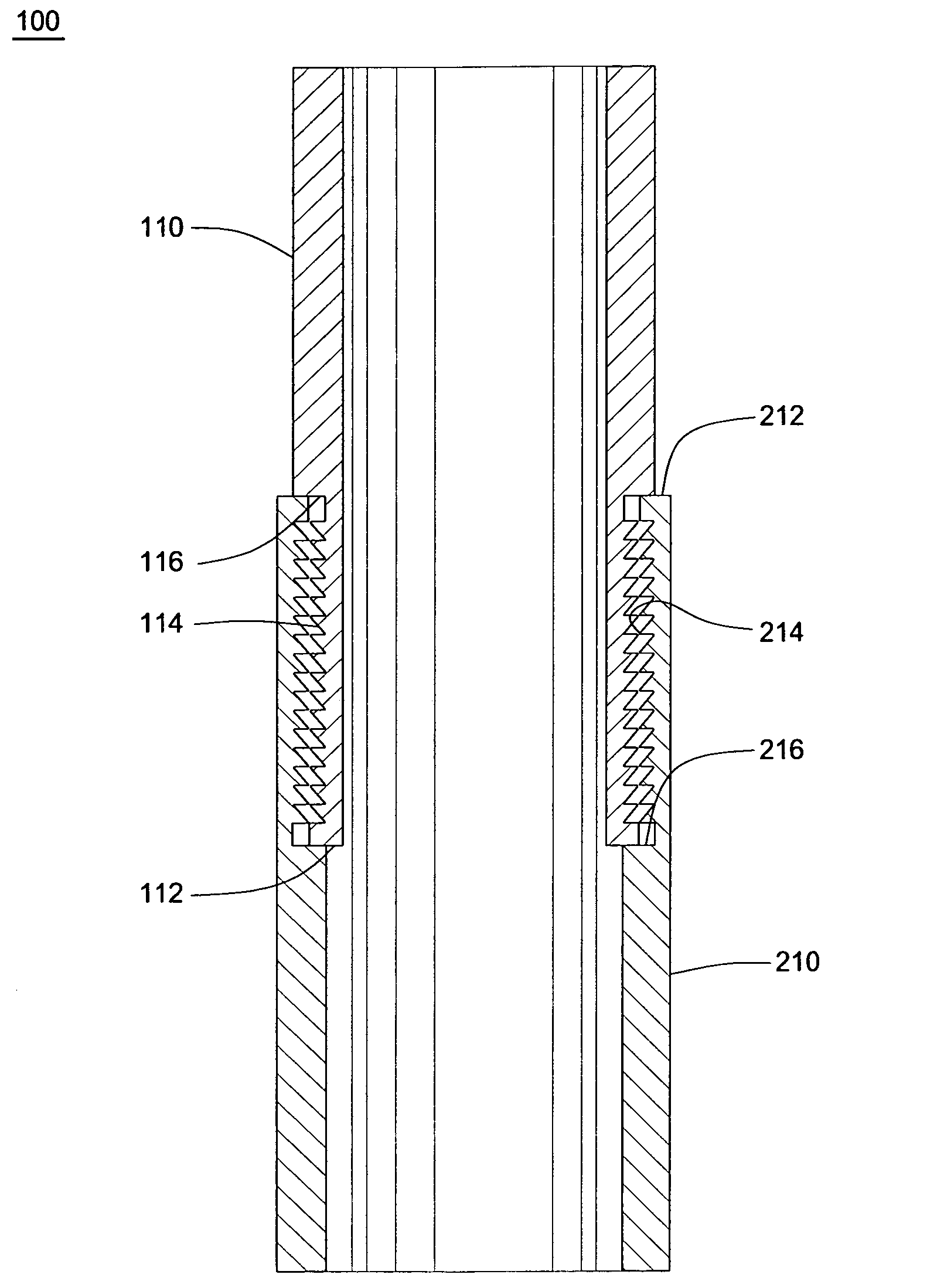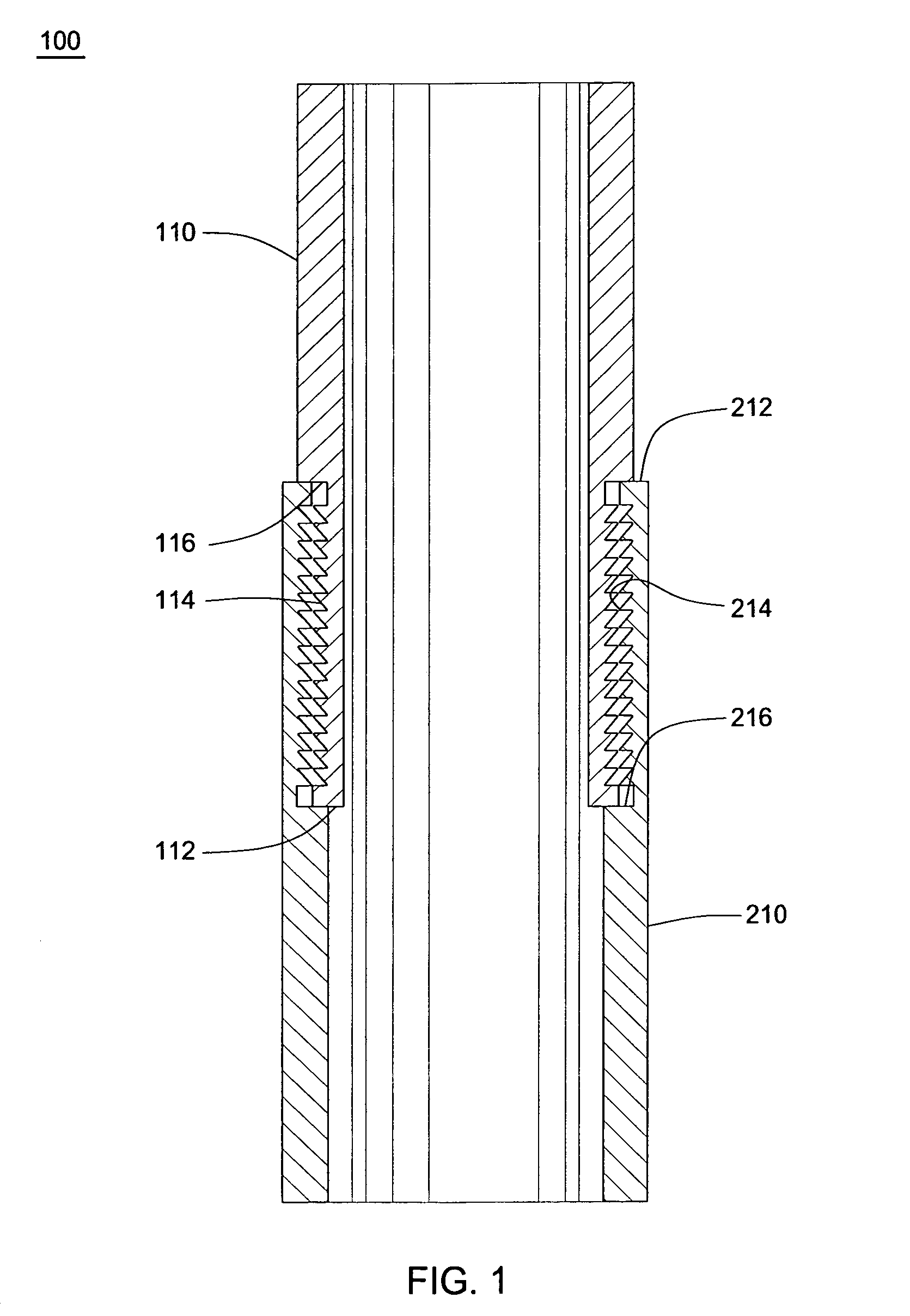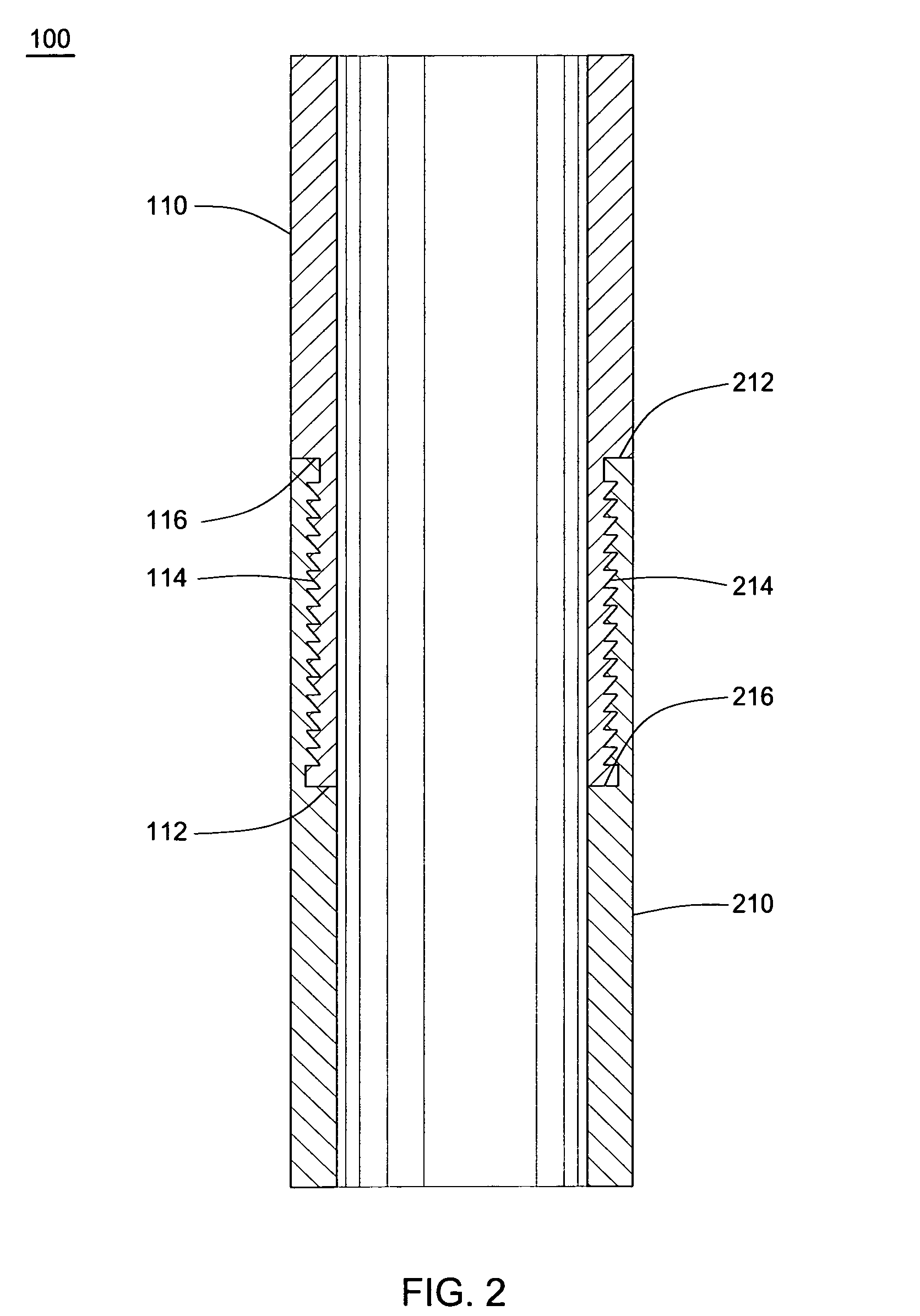Method of jointing and running expandable tubulars
- Summary
- Abstract
- Description
- Claims
- Application Information
AI Technical Summary
Benefits of technology
Problems solved by technology
Method used
Image
Examples
Embodiment Construction
[0029]FIG. 1 is a cross-sectional view of a connector 100 of the present invention. As seen, the connector 100 first comprises a first tubular 110 having an end 112. Disposed on the end of the first tubular 110 are external circumferential ring profiles 114. Also disposed on the end 112 of the first tubular 110 distal to the circumferential ring profiles 114 is a mating shoulder 116.
[0030]The connector 100 also comprises a second tubular 210 having an end 212. Disposed on the end of the second tubular 210 is a corresponding number of matching internal circumferential ring profiles 214. The tubulars are to be joined by either expanding the ring profiles 114 of the first tubular 110 into the ring profiles 214 of the second tubular 210, or by compressing the ring profiles 214 of the second tubular 210 around the ring profiles 114 of the first tubular 110, or a combination thereof. Resulting from the expansion or compression of the connection is that the ring profiles 114, 214 will mate...
PUM
 Login to View More
Login to View More Abstract
Description
Claims
Application Information
 Login to View More
Login to View More - R&D
- Intellectual Property
- Life Sciences
- Materials
- Tech Scout
- Unparalleled Data Quality
- Higher Quality Content
- 60% Fewer Hallucinations
Browse by: Latest US Patents, China's latest patents, Technical Efficacy Thesaurus, Application Domain, Technology Topic, Popular Technical Reports.
© 2025 PatSnap. All rights reserved.Legal|Privacy policy|Modern Slavery Act Transparency Statement|Sitemap|About US| Contact US: help@patsnap.com



